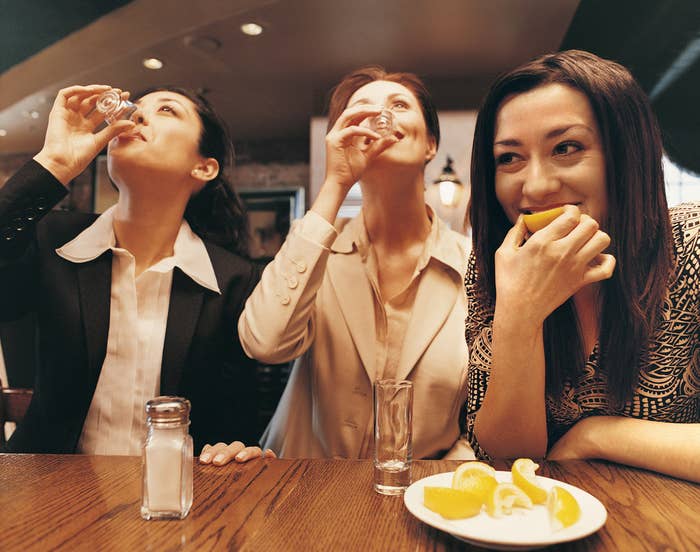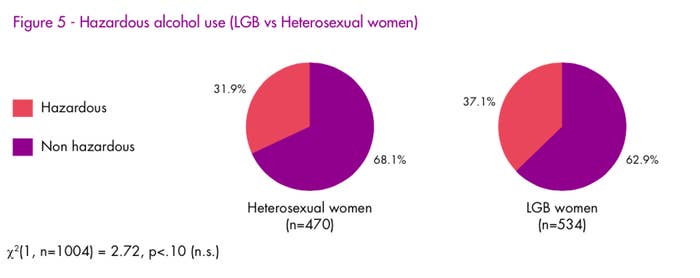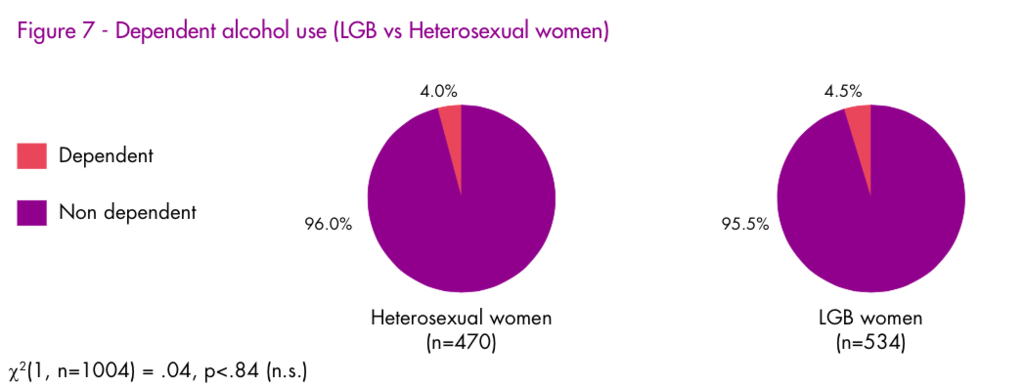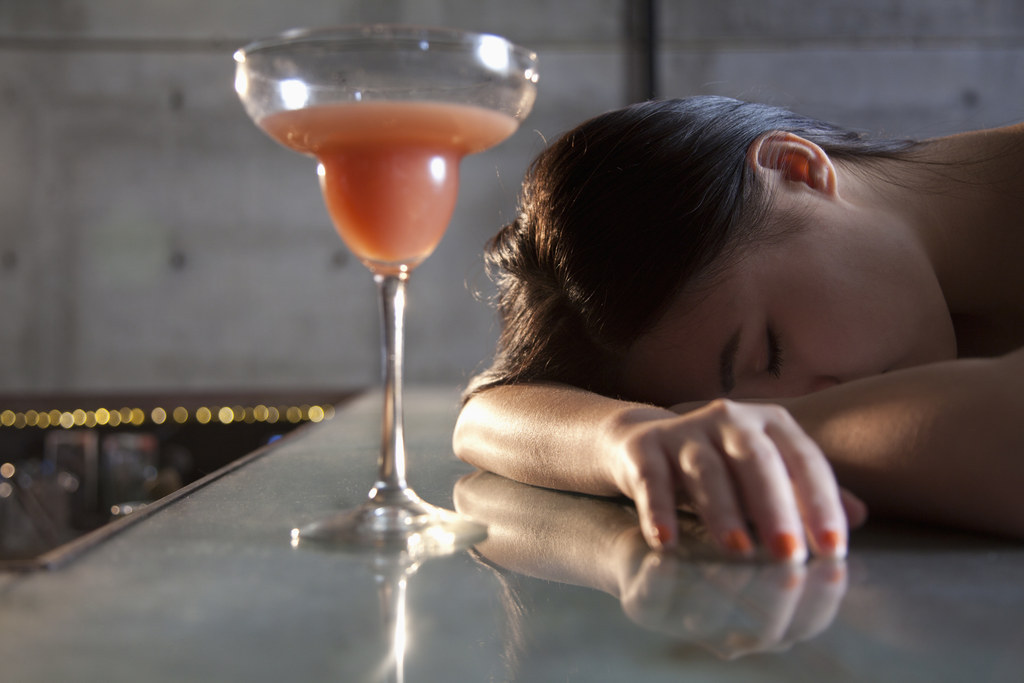
The idea that lesbians are heavier drinkers than straight women has long been conventional wisdom, not least because it was supported by academic studies.
Indeed, a federally funded study in the US theorised that "sexual-minority women's heightened risk of hazardous drinking and psychological distress" might be related to childhood trauma, or the stress caused by coming out.
But now a new study in the UK, seen exclusively by BuzzFeed News, appears to reveal that although a greater proportion of lesbian and bisexual women have a "hazardous" relationship with alcohol than straight women, they are no more likely to be dependent on it.
The findings come from a five-year study carried out by PACE, Britain's leading LGBT mental health organisation, involving approximately 2,000 women. It is believed to be the largest survey of its kind.
The researchers found that 31.9% of heterosexual women engage in problematic drinking, compared to 37.1% of lesbians and bisexual women. But levels of alcohol addiction are almost identical: 4% for straight women and 4.5% for LGB women, which is within the margin of error.


There were, however, some significant differences in behaviour, for example in terms of frequency of drinking. Lesbians and bisexuals got drunk in higher proportions more often, whether it was daily, twice a week, once a week, two or three times a month, once a month, or once a year. Straight women were also significantly more likely never to get drunk.

The research, called The RaRE Research Project (standing for Risk and Resilience Explored), also investigated the causes of problem drinking.
Younger lesbians and bisexuals were more likely to have an unhealthy relationship with alcohol, as were those with religious beliefs or lower levels of general wellbeing. Perhaps surprisingly, LGB women living in a small town or suburb were less likely to have a drink problem than those in big cities.
For those that did drink excessively, the problem of dealing with homophobia from a young age featured frequently. One participant, "Simone", said:
The additional pressure of growing up and knowing that being gay was not considered to be a good thing may have intensified that: the need to push down difficult stuff.
"Yvonne", another participant with a problematic relationship to alcohol, said:
I felt at the time my mother was alive I'd broken her spirit and her hope for me as a young woman because there was a lot of peer pressure surrounding me getting married and having grandkids – the white wedding. So when I did come out there was the disappointment: I'd let my parents down and having to deal with their excuses of why I might be a lesbian. It's upsetting – [the] guilt and [feeling] I didn't live up to their expectations, so drink blanked all that out. I can deal with it as long as I've got a drink.

Others pointed to the drinking culture on the lesbian and gay scene as an important factor in their heavy drinking. "Claire" said:
British culture and attitude to alcohol [is unhelpful]. It's encouraged. The media encourage it, it's everywhere. It's how we socialise. The gay scene is awful for it. There are pills everywhere. Women especially are heavy drinkers.
It's perfectly normal to drink pints in a gay club and it certainly wasn't when I went to heterosexual clubs. But I could easily order pints and nobody would give me a second look in a gay club, whereas heterosexuals had to look dainty and have half a lager. But it was a big drinking culture on the gay scene so that was my experience of it. So you can blend in and not stand out too much as well on that scene and it suited me.
Participants in the research cited many types of treatment as having been helpful for their alcohol problems, including cognitive behavioural therapy (CBT), meditation, yoga, and mindfulness. But many also reported that lesbian-, bisexual-, and gay-specific treatment programmes were particularly useful.
"Simone" added:
It was really important to go to a lesbian and gay [AA meeting] because I realised I carried some shame about my own sexuality – internalised homophobia – and needed to be with other gay people before I mentioned relationships or mention[ed] a girlfriend in a straight or mainstream meeting of Alcoholics Anonymous. It took me a couple of years to get to the point where I could mention my girlfriend and not give a shit.
Margaret Unwin, the CEO of PACE, told BuzzFeed News:
"'We were initially surprised that RaRE didn't appear to show significant differences for LGB women and drinking (compared to their heterosexual peers) as other research has done.
"However, the study showed that problematic drinking among lesbian and bisexual women is often associated with prevailing heterosexism, such as difficulties within families, anxiety about coming out and fear of or actual negative responses when accessing services. These factors create pressures which can partly explain why LGB women may have problematic drinking patterns. This needs further research to unpick the issues."
